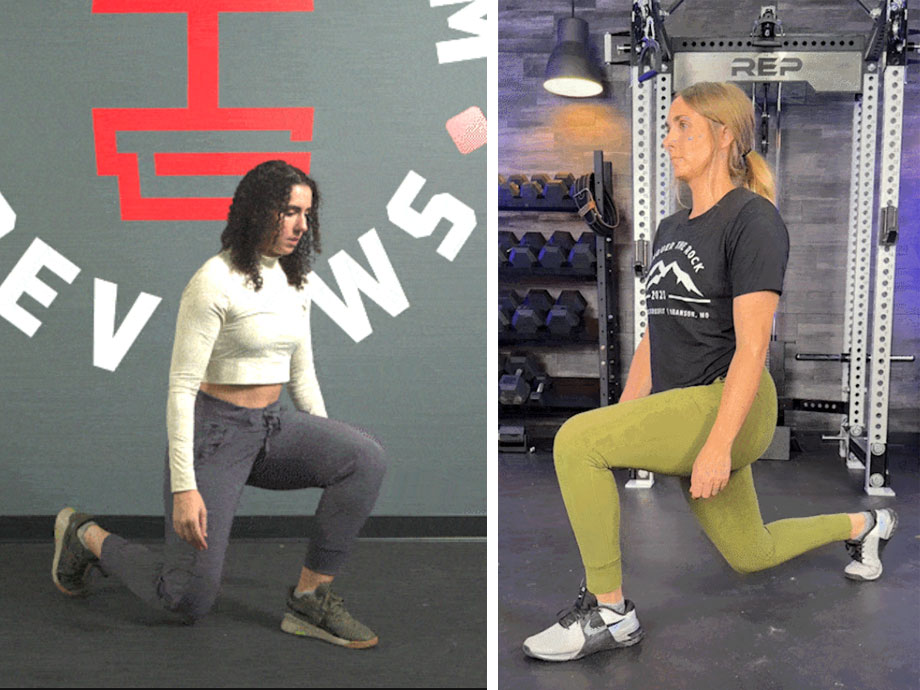We test and review fitness products based on an independent, multi-point methodology. If you use our links to purchase something, we may earn a commission. Read our disclosures.
Leg Day. Whether you love or hate it, you certainly don’t want to waste your time or energy on a subpar exercise split. One debate that lifters may want an answer to is whether one leg exercise is superior to another and, therefore, more worthy of a spot in your leg workout. Case in point: split squat vs lunge. Will one move give you more of a leg up, or are both exercises equally effective?
RELATED: Bodyweight Leg Workout
As a fitness enthusiast and longtime certified personal trainer (CPT), I’ve included both in my workout routines and those of my clients for the past 10 years. I’ll start this comparison by explaining the similarities and differences between the two movements, then describe how to do each exercise with the correct form. To finish, I’ll set you up for success by helping you determine “which and when.”
Let’s begin building your leg muscles!
Quick Look: Split Squat vs Lunge
Split squats and lunges are compound exercises that target your quads, hamstrings, glutes, and calves. Of course, many great weightlifting exercises target your lower body but split squats and lunges require little to no equipment and are performed using one leg at a time.
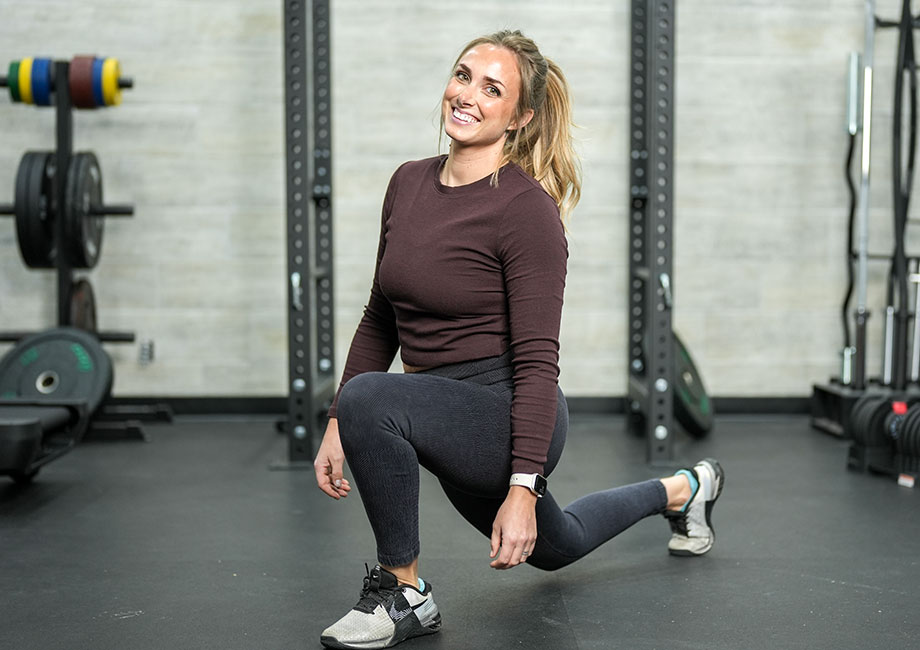
That said, there are differences between the two. Split squats involve a static movement pattern because your feet are fixed to the ground. Lunges, on the other hand, are more dynamic. This makes split squats more suited to those wanting to increase their lower-body strength or muscle and lunges better for those looking to improve their functional strength.
Muscles Worked
As mentioned, split squats and lunges work the quadriceps, hamstrings, glutes, and calves. Here’s a quick breakdown:
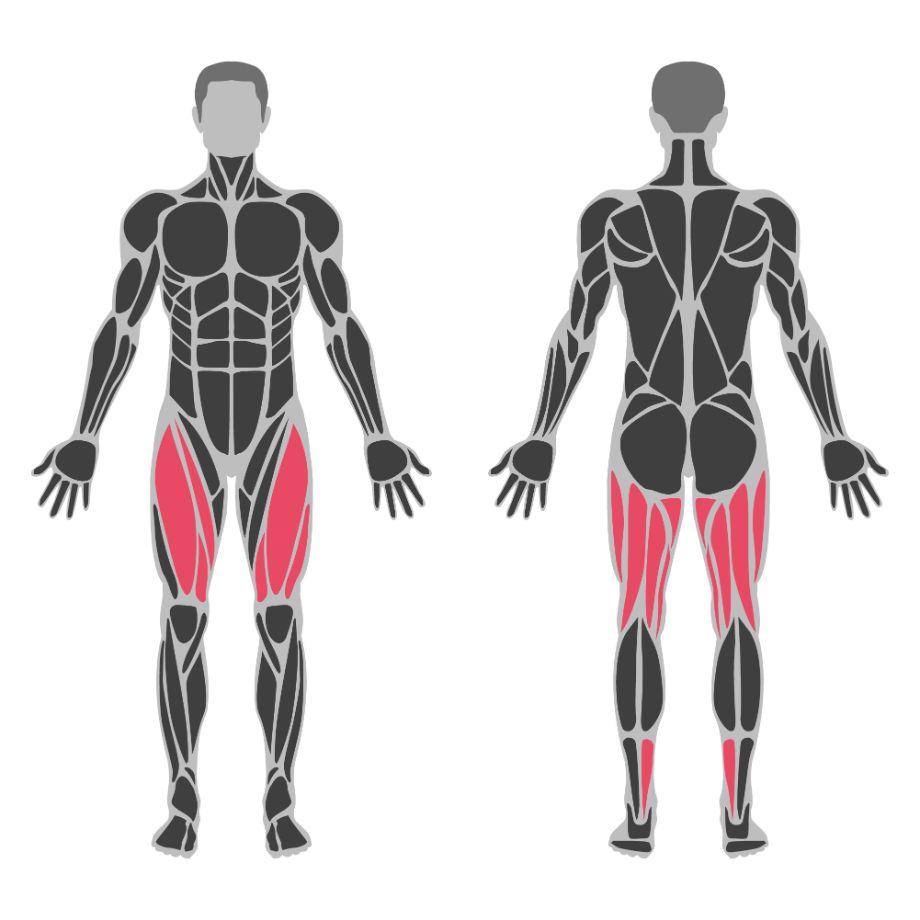
- Quadriceps: Quadriceps muscle1 functions include knee extension, hip flexion, posture, proper stage of step/gait cycle, and maintenance of patellar stability.
- Hamstrings: The hamstring muscle group2 plays a prominent role in hip extension and knee flexion.
- Glutes: The main actions of the gluteal muscle group3 are to extend and externally rotate your thighs.
- Calves: The calf muscles4 are responsible for plantar flexion movement in your feet and ankles.
How To Do Split Squats
Why do it: Because you work each side of the body separately, split squats help to fix muscular imbalances and address bilateral deficits5. They target every muscle group in your lower body, and I like that you can do them with just your body weight (beginner-friendly version) or hold a pair of dumbbells in your hands to make them more challenging.
How to do it:
- Stand upright with your arms by your sides and feet hip-width apart.
- Step your left foot back to enter the staggered stance position. Your front foot should stay fixed in place, and only the toes of your back foot should be in contact with the floor.
- Brace your core, keep your head neutral, and lift your chest up.
- Bend your right knee to lower yourself toward the ground. Your left knee will also bend and move toward the floor.
- Pause momentarily when your right quadricep is parallel to the floor.
- Reverse the motion by pushing through your right heel.
- Continue for the desired number of reps.
- Repeat the exercise on the opposite side for the same number of reps.
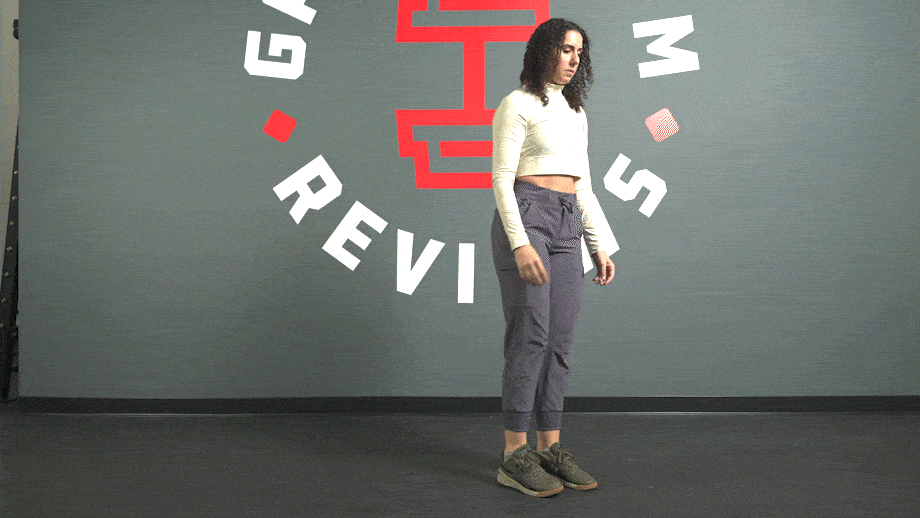
Expert tip: Although the above describes the split squat exercise, some may recognize “split squats” as a movement with your rear foot elevated. Technically, these are Bulgarian split squats. Both are fantastic exercises, but regular split squats are more suited to beginners or those recovering from injuries and are easier to perform.
Benefits of Split Squats
Why should you choose split squats over lunges? Here are a few of the benefits:
- Requires less balance: Once your feet are in position, they don’t move. This means that split squats require less balance and stability than lunges.
- Potential to lift heavier weights: Because of static movement, you may be able to perform more reps or even hold a pair of dumbbells while doing your split squats.
- Gentler on the knees and ankles: Performing a lunge forward or backward can place stress on your knees and ankles—something you may not experience as much with split squats.
How To Do Lunges
Why do it: Like split squats, lunges are considered a unilateral exercise, meaning they help correct muscular and strength imbalances. They’re challenging enough with just your body weight; however, plenty of lunge variations and alternatives exist to make them easier (or more difficult)—for example, reverse lunges, lateral lunges, jumping lunges, and more.
How to do it:
- Stand tall with your feet hip-width apart. Your arms should either be at your sides or your hands on your hips.
- Squeeze your glutes, engage your core, and lift your chest.
- Lunge forward with your left leg, while simultaneously bringing your right knee toward the ground. Your left knee should also bend as a result of this movement.
- When your left quad forms a 90-degree angle to the ground, hold momentarily.
- Push through your left heel to stand up and step back to the starting position.
- Keep going for reps.
- Once finished, repeat the movement on your other side.
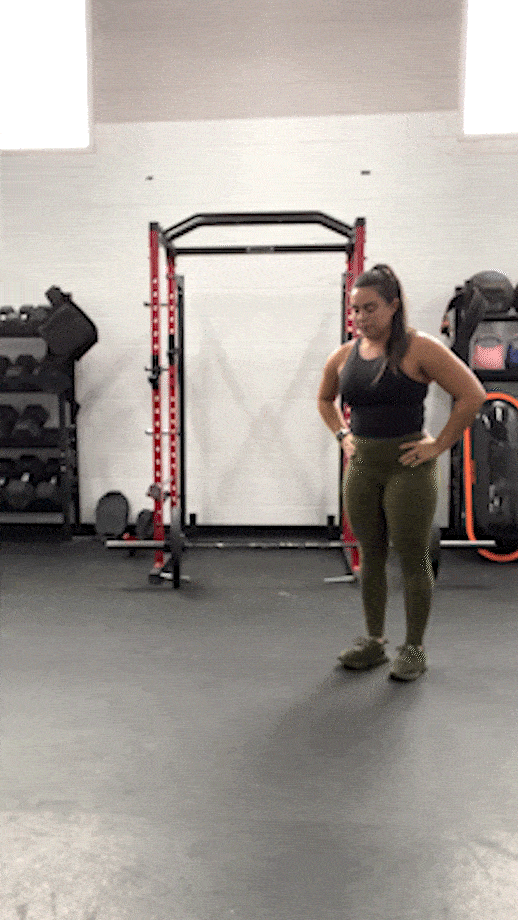
Expert tip: If you have additional space, try walking lunges. Walking lunges require more balance and coordination than forward lunges, but it all comes down to personal preference. Personally, I enjoy walking lunges more than forward lunges.
Benefits of Lunges
So, what do lunges offer that split squats don’t? For starters:
- They’re more functional: Compared to split squats, lunges better mimic real-life movements such as climbing stairs or bending down to pick something up.
- Greater activation of the core: When you step forward and backward, you use your core to stabilize your body to a greater extent.
- Improve hip strength and flexibility: Your hip flexors are stabilizer muscles constantly strengthening and stretching because your legs aren’t fixed in place (as they are with split squats).
Key Similarities Between Split Squats And Lunges
Split squats and lunges may look similar to the untrained eye. In many respects, they are. Here are three key similarities between these two Leg Day exercises:
They Hit The Same Muscle Groups
Split squats and lunges are leg exercises that target your quadriceps, hamstrings, glutes, and calves. Although there are differences between the two (you’ll see these below), you can use them interchangeably in your workout routine. The movement pattern of both exercises is similar—you have a front leg and a back leg, and the goal is to get the knee of your rear leg as close to the floor as possible.
They’re Unilateral Exercises
You perform both using a single leg at a time. With other leg exercises (for example, back squats or deadlifts), although you can lift heavy weights, your more dominant side tends to compensate for your weaker side. This can lead to strength and muscle imbalances. With split squats and lunges, you may not have this issue.
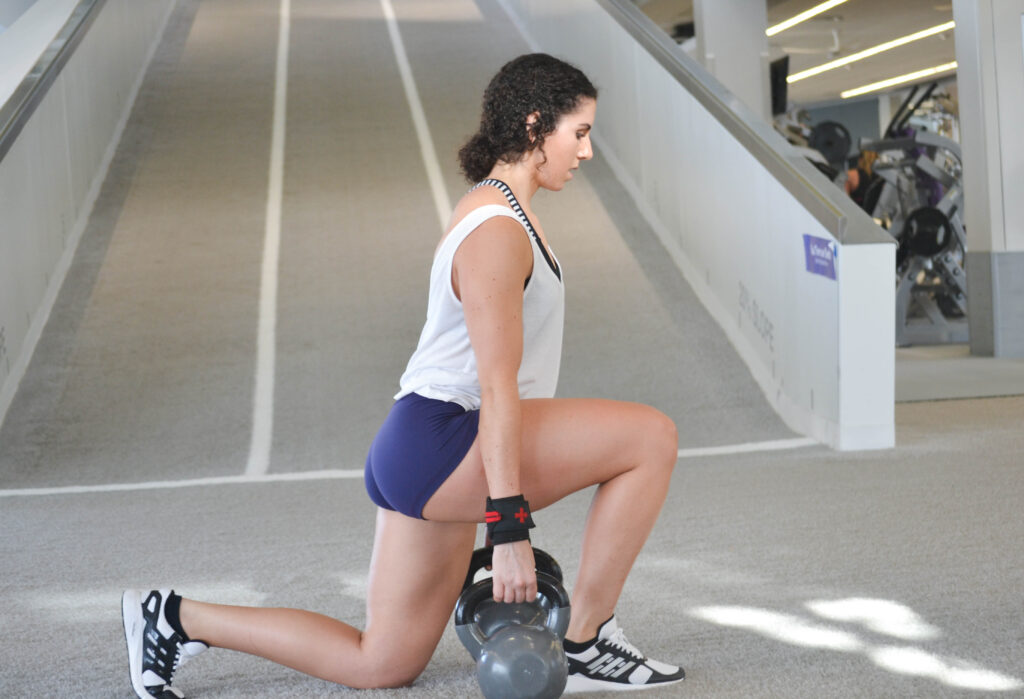
They Require Little To No Equipment
If you’re new to strength training, you likely won’t need any equipment for split squats or lunges. Because they’re unilateral exercises (see above), both exercises are challenging enough for most people using their body weight only. If you need to, you can add extra resistance in the form of dumbbells, kettlebells, or barbells.
RELATED: Best Dumbbells
Important Differences Between Split Squats And Lunges
Now that you know the similarities, let’s discuss the main differences between split squat vs lunge:
Static vs Dynamic Movement Pattern
With split squats, once you’re in the staggered stance position, your feet don’t move, which means it’s a static exercise. On the other hand, lunges are a dynamic exercise because you’re repeatedly stepping forward or backward. It’s worth noting lunges require more balance and stability than split squats.
Hypertrophy vs Functional Fitness
A key difference between split squats and lunges is that lifters generally use split squat variations to build muscle (hypertrophy) or increase their leg strength since adding extra resistance and focusing on form is easier. Lunges, on the other hand, are more dynamic and, therefore, better at improving your overall coordination and balance (aka functional fitness).
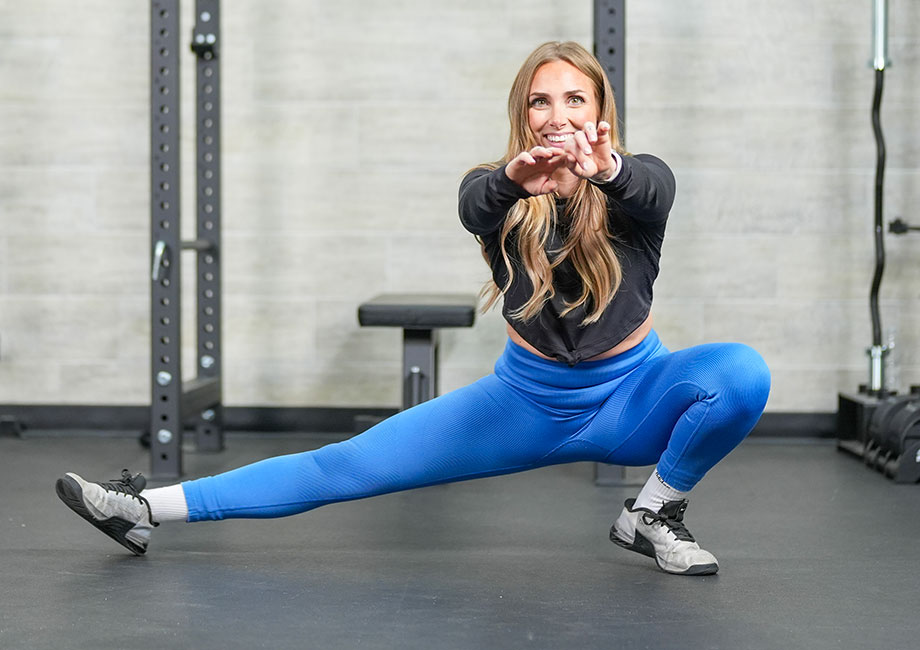
They Emphasize Different Muscles
I appreciate that I mentioned above that both exercises hit the same muscle groups. This is true. However, the muscles that each exercise emphasizes are slightly different. Split squats are better for building muscle in the quads and glutes, while lunges are more effective at targeting the lower body as a whole (including the adductors and abductors). Choose the best exercise for your individual needs, depending on your fitness goals.
Split Squats vs Lunges: Which Should You Do?
So, which one should you add to your training program: split squat or lunge? Technically, you could do both and rotate between the two, depending on how you feel on the day.
However, this isn’t the most optimal way to train because progressive overload requires that you master an exercise first.
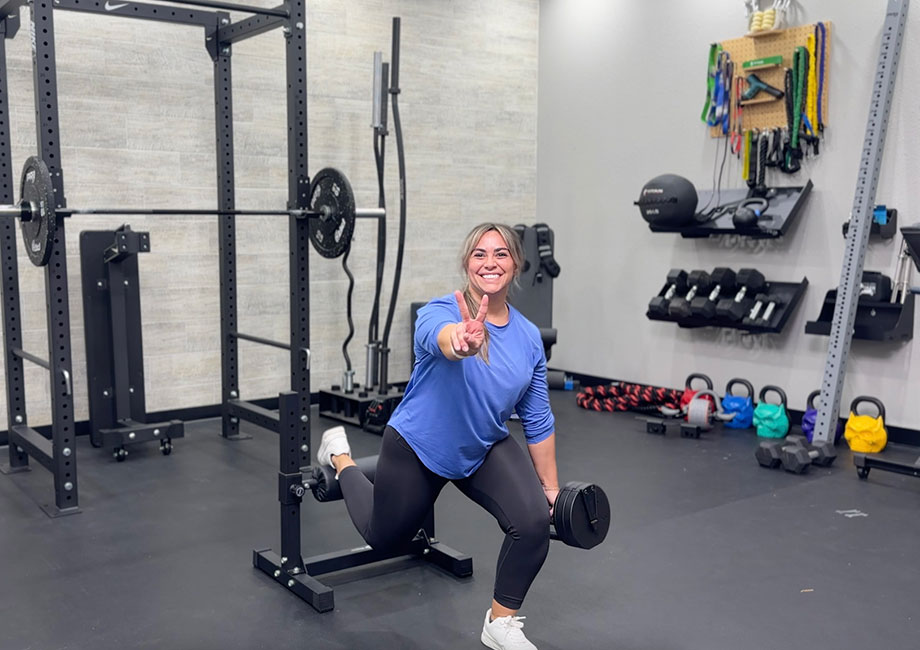
Therefore, I suggest picking split squats if:
- You’re new to resistance training
- Hypertrophy or strength are your primary fitness goal
- You want to target your quads and glutes
- You previously had—or are recovering from—an ankle or knee injury
Alternatively, choose lunges if:
- Your goal is to improve your functional fitness
- You want to target more of your lower body
- Core activation is important to you
- You want your hip flexors to be stronger and more flexible
It’s worth noting that these are guidelines, and your individual needs may vary. If one exercise is more suited to you—but you don’t like doing it—perform the other. At the end of the day, both exercises work similar muscle groups, so doing one is better than doing neither.
Split Squats vs Lunges: Final Thoughts
Split squats and lunges are both fantastic lower-body exercises. They hit the same muscle groups, are unilateral exercises, and require little to no equipment. Split squats are a static exercise and are more suited to those who want to build strength or muscle in the legs, while lunges are a dynamic exercise for those looking to improve their functional fitness.
Regardless of whether you choose split squats or lunges, remember to warm-up properly beforehand. It’s also important to get the full range of motion with both exercises—this means that your back knee should be as close to the ground as possible. And remember, if you don’t like one exercise, switch to the other to see if you enjoy it more.
RELATED: Best Warm-Up Exercises
Split Squats vs Lunges: FAQs
Can you replace squats with lunges?
Technically, yes, you can replace squats with lunges. Both exercises target your quads, hamstrings, glutes, and calves, so they’re somewhat interchangeable. Regularly performing lunges will also help improve your balance or correct muscular imbalances.
However, squats allow you to lift heavy loads that lunges don’t. There are also other benefits of squats that you won’t get if you replace them with lunges, such as increased power6 and the ability to sprint faster. I wouldn’t recommend replacing squats with lunges unless you need to, but instead, include both exercises in your workout routine.
Do split squats work glutes or quads more?
Split squats work both your quads and glutes. With regular split squats (where your torso is upright), I—a certified personal trainer—would say you’ll target your quads slightly more than your glutes. If you want to change this, lean forward slightly with your upper body. Also, don’t round your lower back if you do this because the last thing you want is to get injured.
Are lunges better for strength or hypertrophy?
Lunges are a dynamic exercise that can help improve your functional fitness. At the same time, you can include them in either strength or hypertrophy workouts, although you don’t often see them in the former. The optimal number of reps to build muscle is between six and 12, so aim for this if hypertrophy (aka muscle-building) is your goal. For strength, anywhere between one and five reps is ideal.
References
- Bordoni B, Varacallo M. Anatomy, Bony Pelvis and Lower Limb: Thigh Quadriceps Muscle. [Updated 2023 May 8]. In: StatPearls [Internet]. Treasure Island (FL): StatPearls Publishing; 2024 Jan-. Available from: https://www.ncbi.nlm.nih.gov/books/NBK513334/
- Rodgers CD, Raja A. Anatomy, Bony Pelvis and Lower Limb, Hamstring Muscle. [Updated 2023 Apr 1]. In: StatPearls [Internet]. Treasure Island (FL): StatPearls Publishing; 2024 Jan-. Available from: https://www.ncbi.nlm.nih.gov/books/NBK546688/
- Elzanie A, Borger J. Anatomy, Bony Pelvis and Lower Limb, Gluteus Maximus Muscle. [Updated 2023 Apr 1]. In: StatPearls [Internet]. Treasure Island (FL): StatPearls Publishing; 2024 Jan-. Available from: https://www.ncbi.nlm.nih.gov/books/NBK538193/
- Binstead JT, Munjal A, Varacallo M. Anatomy, Bony Pelvis and Lower Limb: Calf. [Updated 2023 May 23]. In: StatPearls [Internet]. Treasure Island (FL): StatPearls Publishing; 2024 Jan-. Available from: https://www.ncbi.nlm.nih.gov/books/NBK459362/
- Škarabot J, Cronin N, Strojnik V, Avela J. Bilateral deficit in maximal force production. Eur J Appl Physiol. 2016 Dec;116(11-12):2057-2084. doi: 10.1007/s00421-016-3458-z. Epub 2016 Aug 31. PMID: 27582260.
- Takai Y, Fukunaga Y, Fujita E, Mori H, Yoshimoto T, Yamamoto M, Kanehisa H. Effects of body mass-based squat training in adolescent boys. J Sports Sci Med. 2013 Mar 1;12(1):60-5. PMID: 24149726; PMCID: PMC3761779.
Further reading

The Rogue Echo Bike is Rogue Fitness' first foray into conditioning equipment. The Echo Bike combines features of both the Schwinn Airdyne Pro and Assault AirBike to create the best value air bike currently on the market. Read more

Leg Day. Whether you love or hate it, you certainly don’t want to waste your time or energy on a subpar exercise split. One debate that lifters may want an answer to is whether one leg exercise is superior to another and, therefore, more worthy of a spot in your leg workout. Case in point: split squat vs lunge. Will one move give you more of a leg up, » Read more about: Split Squat vs Lunge: Is One Better Than the Other for Building Your Leg Muscles? » Read more

Grow your glutes and hamstrings with the often forgotten pull-through exercise. Read more

Can a company known for its rowers make a good exercise bike? Our Concept2 BikeErg review will let you know our thoughts. Read more

